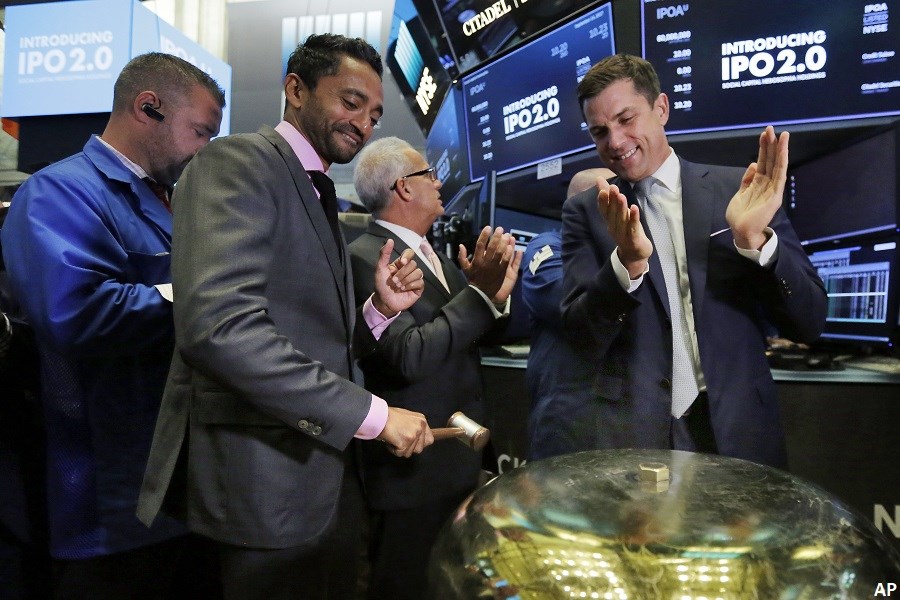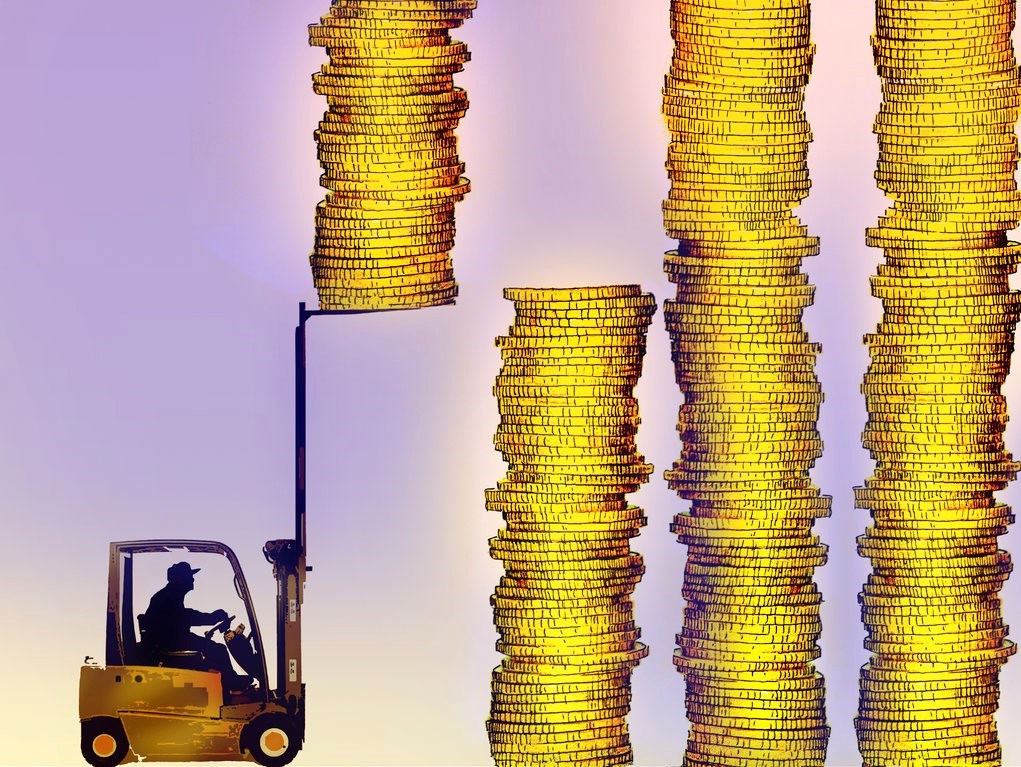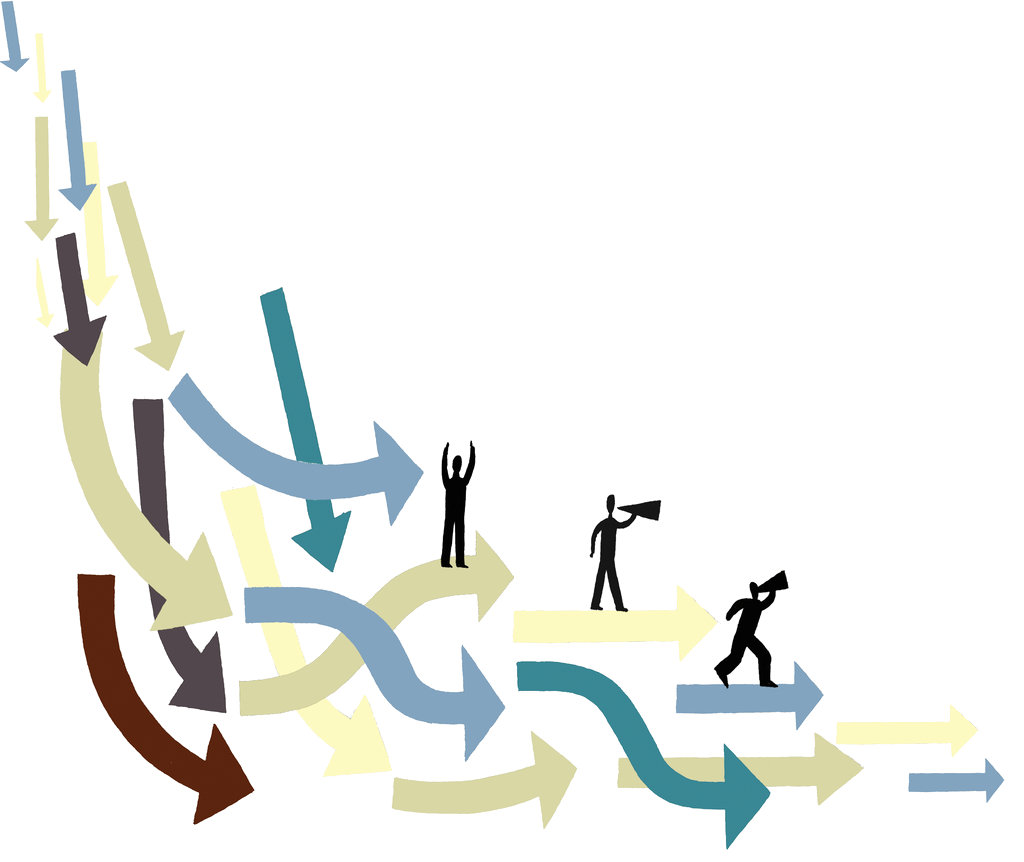
Back in 1987, Warren Buffett wrote in his annual letter to shareholders, “As they say in poker if you've been in the game 30 minutes and you don't know who the patsy is, you're the patsy." It’s kind of like that with SPACs.
A SPAC or ‘Special Purpose Acquisition Company’ is a company with no real business operations. It exists only to raise capital via an initial public offering, or an IPO, and to then use that capital to buy existing private companies.
These companies own and manage nothing except the cash that they raise. Because of this, they are called ‘Blank-Cheque Companies.’ They are generally formed by investors, also called sponsors.
Sponsors usually have experience and expertise in a particular sector, and it is assumed that the acquisition targets will be companies in that sector. Many sponsors are seasoned private equity investors (and popular on Twitter).
These companies can be pumped and IPO without having to identify the companies that they want to acquire. Put another way, if you buy into a SPAC, you will have no idea which company you might end up owning. You don’t even know IF you will end up owning an acquired company. The deal doesn’t even have to happen.
The concept of a SPAC itself can be boiled down to a pre-sold IPO for the private company that it acquires – without many of the stringent requirements, checks and balances that go into a traditional listing. Investors should remember that the long (and indeed, tedious) IPO process is in place to protect investors. When a company goes public via a traditional IPO, there is careful institutional and regulatory vetting, which ultimately benefits the investor by bringing issues to light.
Who Makes the Money?
"These early embracers saw SPACs as a way to extract fees from adding structure to a reverse merger," notes Cameron Stanfill, an analyst with Pitchbook, a Morningstar company. Pitchbook data has seen 13 SPACs tracked so far closing between April 1 – April 15, 2021, as against 316 for Q1 2021.
A lot of people make a lot of money on SPACs – but most of the time, not you or me.
Stanfill explains how investors can lose a lot of value by design: If a hypothetical SPAC raised a $400 million IPO by selling 40 million shares at $10, the vehicle would pay $22 million in fees to the investment banks, leaving $378 million for the transaction. At the SPAC’s founding in this scenario, the sponsors bought 10 million shares for a nominal fee rather than buying them for $100 million, therefore implicitly taking away capital that could have been raised by the company. In this simplified version, the company is implicitly paying $122 million to raise $500 million, leaving the company with $378 million or a 22.4% cost of capital without even factoring in warrants. This is relative to a traditional IPO raising $500 million, which at a 7% fee would cost the company $35 million, with the proceeds to the company totalling $465 million.
“There’s no need to do the pros and cons here. The sponsors make obscene amounts of money. They receive 20% of the outstanding shares for free (the “promote”). Their only risk is reputational. If their acquisition turns out badly, they’ll still make gobs of money, but may have a tougher time doing the next SPAC,” points out Tom Bradley, the CIO of Steadyhand Investment Funds. He also identifies hedge funds as net gainers. “Historically, SPACs have been heavily supported by hedge fund managers. Today, this loyalty is being rewarded when it comes to allocating shares. Hedge funds receive the lion’s share of the initial offerings. Individual investors get little or no allocation,” he adds.
Bradly warns that the odds are stacked against individual investors. “Remember, the amateurs don’t get to play until the SPAC is trading. They don’t get the warrants and often pay too much,” he says. He thinks SPACs are financially engineered products, that don’t benefit the retail investor much.
Who Pays the Price?
Individual investors like you and me usually end up padding the pockets of sponsors.
In a paper published in the Harvard Law School Forum on Corporate Governance, the authors found that though SPACs issue shares for roughly $10 and value their shares at $10 when they merge, by the time of the merger the median SPAC holds cash of just $6.67 per share. “When commentators say SPACs are a cheap way to go public, they are right, but only because SPAC investors are bearing the cost, which is an unsustainable situation,” the report finds. It also finds that SPAC investors that hold shares at the time of a SPAC’s merger see post-merger share prices drop on average by a third or more.
“The primary source of SPACs’ high cost and poor post-merger performance is dilution built into the circuitous two-year route they take to bringing a company public. There are three sources of dilution inherent in the SPAC structure. 1. SPAC sponsors compensate themselves with a “promote” consisting of shares equal to 25% of the SPAC’s IPO proceeds, or equivalently, 20% of post-IPO equity. 2. To attract IPO investors, SPACs promise a very attractive return for simply allowing the SPAC to hold their cash for two years. 3. At the time of their IPO, SPACs pay an underwriting fee based on IPO proceeds, despite the fact that most shares sold in the IPO will be redeemed at the time of the merger,” the report finds.
“By three months following a SPAC’s merger, median returns were negative 14.5% and median returns in excess of the Russell 2000 or the IPO index were even lower. Six-month returns were worse and twelve-month returns (for those SPACs with that much post-merger performance history) are worse still. A reasonable inference is that targets negotiated prices or share exchanges based on the cash value of SPAC shares, and that SPAC shareholders bore the cost of SPACs’ dilution,” the report finds.
Should You Buy A SPAC?
Bradly notes that if you do buy one, wait until after the deal is done and listed. “The market is a good pricing mechanism. Maybe some SPACs might get away from you, but a majority dip below $10 after they list. And if you do believe in the promoter or the idea, then you should be celebrating to get the stock cheaper!” he says.
As Dave Sekera, chief U.S. market strategist for Morningstar points out, SPACs include many additional risks that are not typically found within more traditional equity analysis. These risks include the need to:
- conduct an extra layer of due diligence on the terms and structure;
- evaluate sponsors' track records of investing in private companies as you are relying on their business acumen to invest your money;
- closely monitor for when sponsors announce merger transactions;
- properly value merger candidates, which is especially tricky as they are in their early stages and do not have track records to help investors evaluate their growth potential;
- evaluate the amount of potential equity dilution that may occur when a merger closes and how that may impact the value of the premerger shares;
- understand that while shareholders have the right to exercise their redemption rights when a merger is announced, any premium paid over the IPO price would be lost.
“Investing in SPACs should not be undertaken lightly. Based on the required due diligence, the valuation of the eventual merger candidate, and the determination of potential dilution, investing in SPACs should be limited to investors with the skill set and time to properly analyze the myriad additional risks that are not inherent to investing in normal stocks,” he says.
Still want to go for a SPAC? As always, we guide caution:
First: You do not know in advance the acquisition target you’re taking a bet on the founder of the SPAC. Retail investors rarely have insight into the minds of founders, and can only make bets based on public perception. This is a risk.
Second: Even if the founder has a target in mind, the SPAC might not be able to close the deal. If this is the case, and you get your money back a few years after the initial investment, that is an opportunity cost. An opportunity cost is what you lose in gains you could have potentially made, had you not invested in the SPAC.
Third: There’s a lot of people making a lot of money from SPACs – and those people don't seem to be retail investors.
Fourth: The success of the SPAC depends on the success of the company it acquires. As established, the research, due diligence, checks and other safeguards around these acquisitions may not be as stringent as in the case of a traditional IPO, or public company acquisition. It again seems like the investor is the loser.
Before you invest in a SPAC, ask yourself who is making the money, on what, and if you have alternatives you could consider. And as always, invest based on your financial goals, risk appetite and time horizon. When in doubt, seek a financial advisor.
©2021 Morningstar. All rights reserved. The information, data, analyses and opinions presented herein do not constitute investment advice; are provided as of the date written, solely for informational purposes; and subject to change at any time without notice. This content is not an offer to buy or sell any particular security and is not warranted to be correct, complete or accurate. Past performance is not a guarantee of future results. The Morningstar name and logo are registered marks of Morningstar, Inc. This article includes proprietary materials of Morningstar; reproduction, transcription or other use, by any means, in whole or in part, without prior, written consent of Morningstar is prohibited. This article is intended for general circulation, and does not take into account the specific investment objectives, financial situation or particular needs of any particular person. Investors should consult a financial adviser regarding the suitability of any investment product, taking into account their specific investment objectives, financial situation or particular needs, before making any investment decisions. Morningstar Investment Management Asia Limited is licensed and regulated by the Hong Kong Securities and Futures Commission to provide investment research and investment advisory services to professional investors only. Morningstar Investment Adviser Singapore Pte. Limited is licensed by the Monetary Authority of Singapore to provide financial advisory services in Singapore. Either Morningstar Investment Management Asia Limited or Morningstar Investment Adviser Singapore Pte. Limited will be the entity responsible for the creation and distribution of the research services described in this article.













.png)








